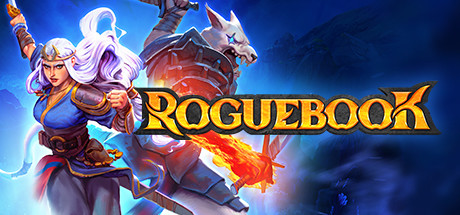A rogulite deckbuilder from the guy who gave us Magic the Gathering
Type: Singleplayer
Genre: Roguelite, Deckbuilder
Developer: Abrakam Entertainment
Publisher: Nacon
Release date: 17 Jun, 2021


That statement above might not be entirely fair, but Richard Garfield of Magic the Gathering fame was involved in making this roguelite deckbuilder. Ever since Slay the Spire there’s been a lot of these games that put their own twist on the deckbuilding formula.
Like with other games of its type Roguebook is a game where you’ll be trying to build up a well oiled deck of cards that’s able to take on increasingly difficult foes, and if you die at any point you’ll get transported to the start of the game. Story is rarely a big concern in these games, and Rougebook is no exception. You’re trapped inside The book of “Lore of Faeria” and you need to make your way through its pages, though the book theme does not shine through very strongly.
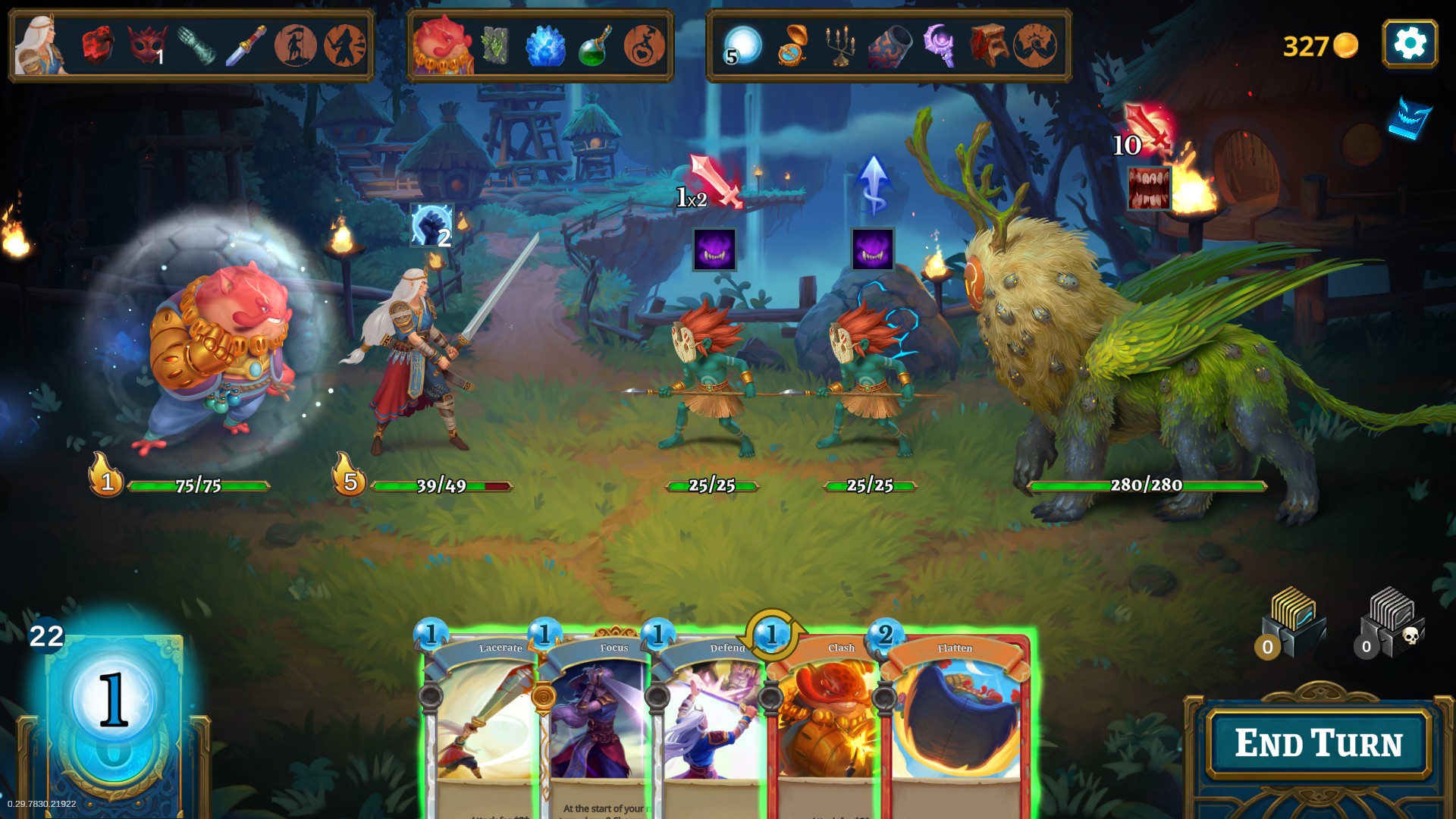
Presentation
Early screenshots of Roguebook showed a game that looked overly saturated, to the point where it seemed almost garish. Luckily they’ve toned this down significantly for the final release. Roguebook is still a colourful game though, just not over-saturated.
Roguebook is split into two main parts, battles and overworld exploration, and it’s the battles that steal the show in terms of graphical flare. During battles you’ll have two sides facing off against each other, one being the two player characters and the other side being the monsters. Both the player and monster sprites are very detailed and have an interesting and consistent art style, though the animations can at times look a bit rough. Not bad, just not quite on par with everything else. As for the backgrounds, they look great and are highly detailed and animated. On the overworld the game looks simpler, and does not quite live up to the high bar that the battle graphics set. The map is made out of hexagons from one of three biomes and each region also has its own unique map features that do look very good, but the map itself looks more functional than great. Scattered across the map are also things you can interact with, crossed swords for enemies and items you can pick up, with only the main characters and a merchant being represented on the map as people.
Each card has a unique picture that shows what the card is about, more or less at least. Every card is themed to one of four playable characters and a card for one character looks distinct from any card for another character, with a different colours and designs being used. The card art is well drawn and fits in with the characters.
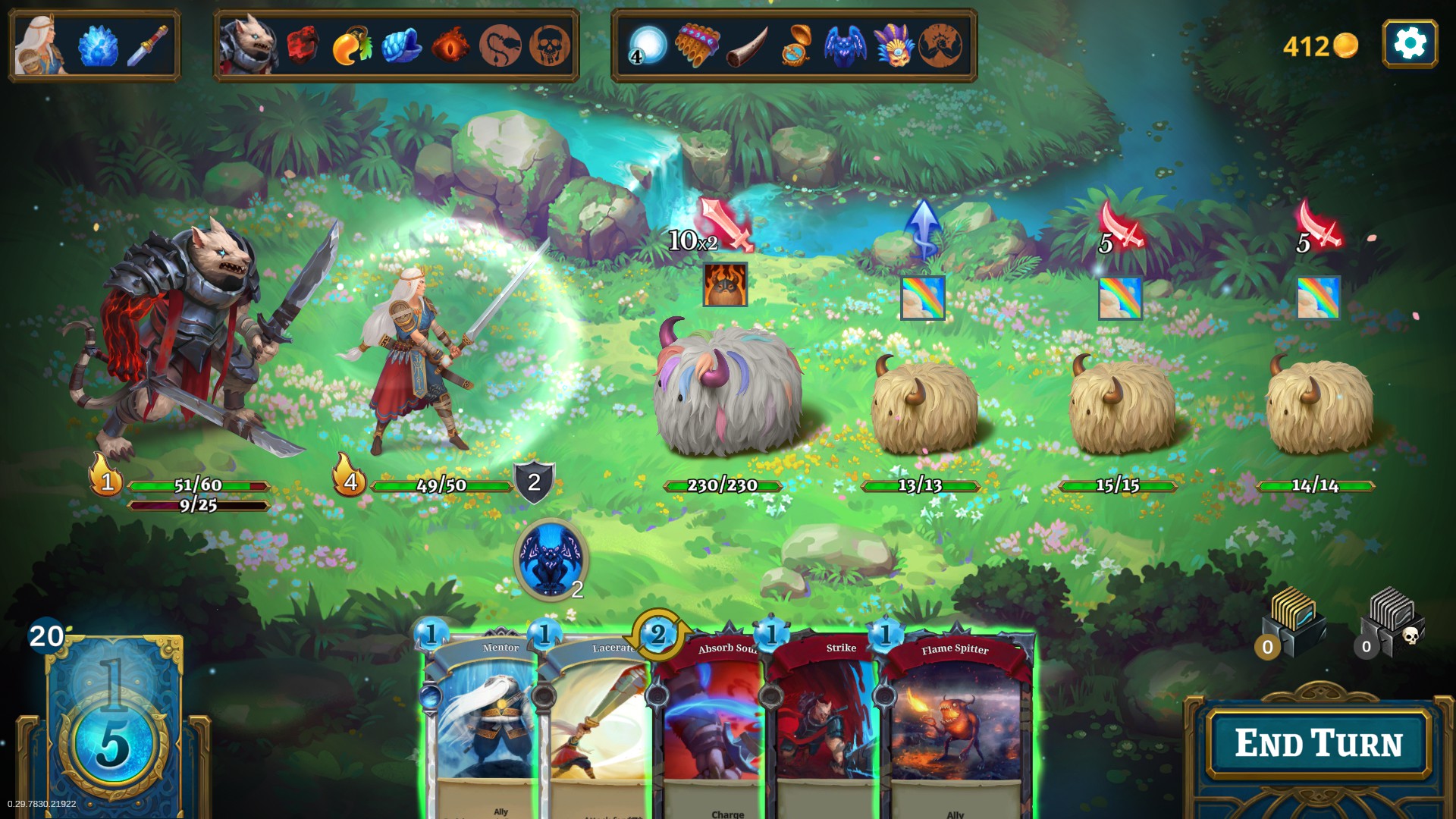
Despite the varied looks of both creatures and cards Roguebook looks consistent, everything looks like it belongs in the same game, which is quite impressive considering this is a game that has large mechanical crabs, a yak firing catapult piloted by kobolds and nightmarish daemons. On a technical level there are many games that look better than Roguebook, but here we have a strong art style that’s carrying the graphics.
Sound effects do a good job at conveying what’s going on and there’s the right amount of weight behind them. There’s also some voice acting with some of the characters saying certain things to each other in certain situations, though the game is not fully voiced and there’s a fare bit of text that you’ll have to read. Finally there’s the music which has an ethereal fairytale feel (or mid 90’s American Christmas movie, they use the same instruments). Roguebook might not have a soundtrack so good that it will win awards for it, but it still sounds good, and fit the tone of the game.
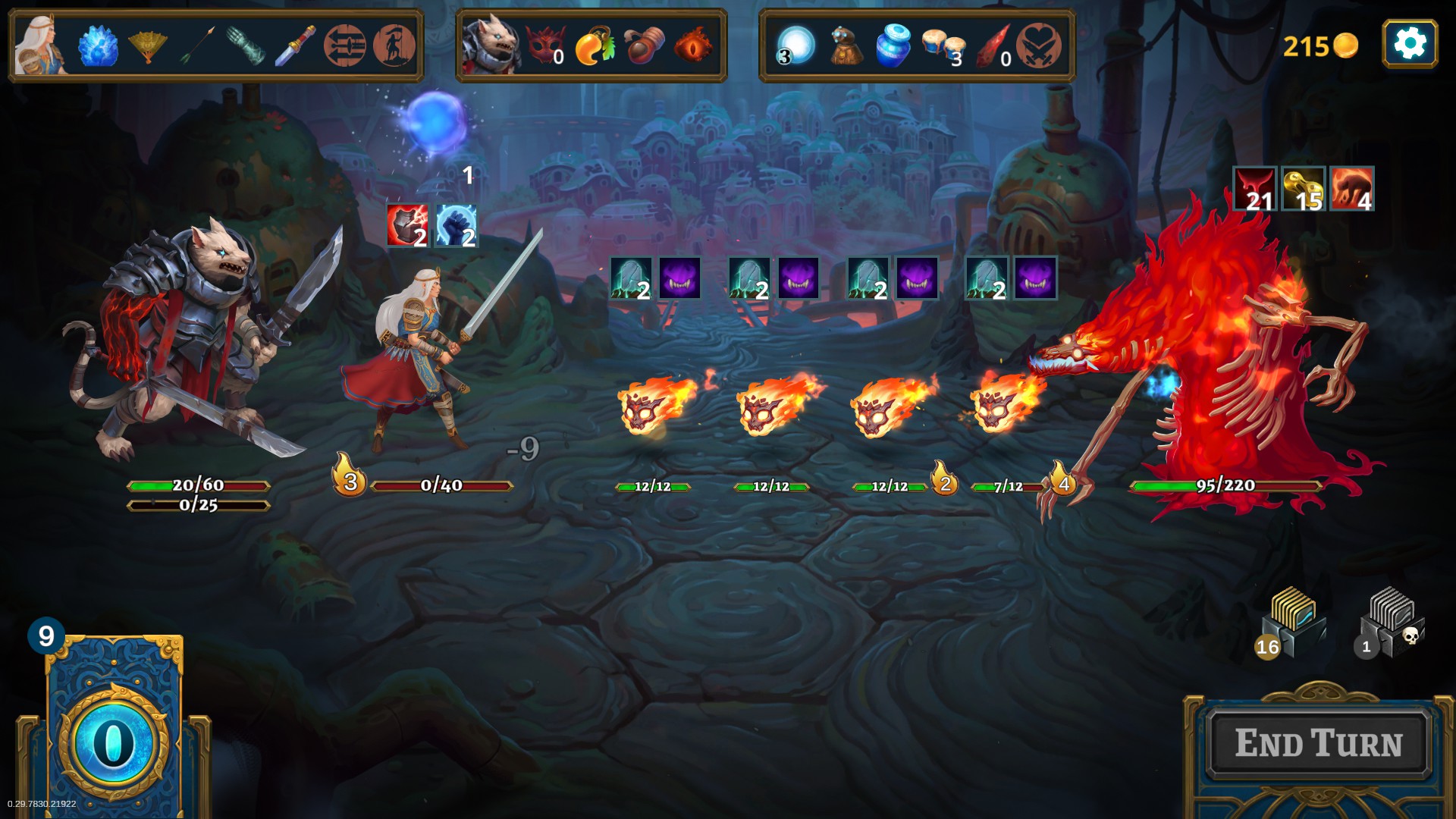
Gameplay
If you’ve ever played Slay the Spire then a lot of things will seem familiar in Roguebook. You’ve got a deck of cards that you build up as the game goes on, and once you die you get sent back to the beginning of the game. Combat is turnbased and has you playing your cards, followed by the enemies using their abilities, and then you get another turn. Enemies clearly telegraph their next action with an icon floating over them, and you’ve got defense cards that gives you a flat damage reduction that you can stack, and which only lasts a single turn. All of this could apply both to Roguebook and Slay the Spire.
There are differences between the two games though. Before starting a new run you get to pick between four different characters (though only two are unlocked at the start of the game), and you always bring two of those four with you. Each character has its own unique set of cards that it can find, as well as a different health value and they come with different starting artifacts. The characters play very differently, you’ve got one character that’s good at dealing direct damage and placing damage over time effects, but who’s fragile, another character is very tough and can build a lot of defense and has access to more attacks that hit multiple enemies, a third character feeds off of pain and once he’s been hurt enough can unleash more powerful versions of his cards, and also has the ability to regain health, and the final character tends to enjoy drawing cards and leveraging a large hand, as well as reverting negative effects, but feels like it’s made out of glass. The characters seemed pretty well balanced overall and different combinations of characters can result in completely different playstyles.
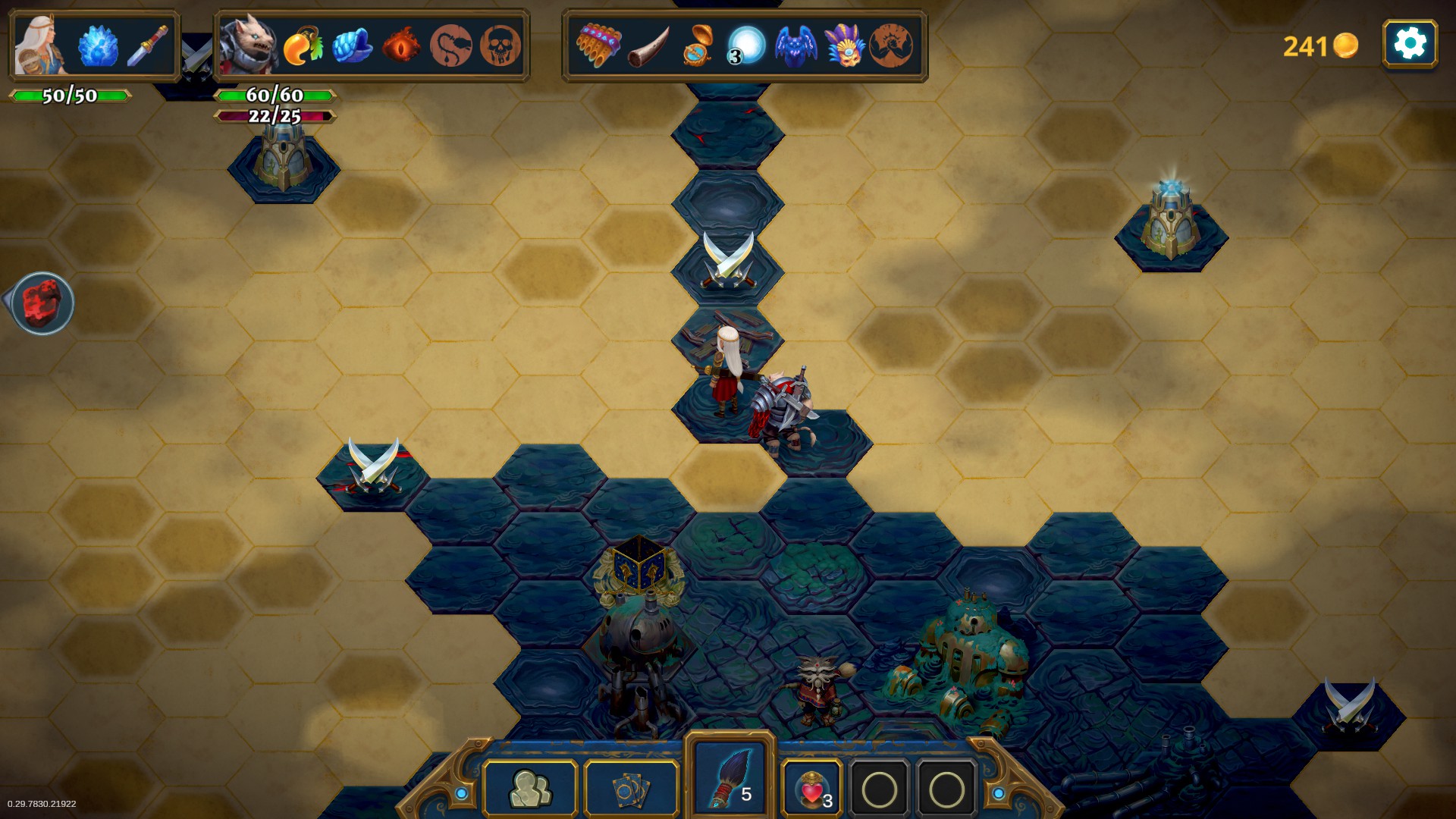
The overworld maps in Roguebook are randomly generated and relatively large. At the start of each map you’ll have a small area uncovered around you and a line going to the boss, with at least one stronger enemy along that path. A few key points, which will vary depending on what modifiers you’re playing with, will also be shown scattered over the map. You can only move across uncovered terrain, but items, called ink, can be used to uncover more of the terrain, and you also have a limited number of uses of a brush that will uncover a larger amount of area around you. Certain locations on the map will also uncover more of it. On the map you’ll also find gold, artifacts, enemies, items, events and so on.
New cards are found in caches scattered around the map, and each time you use one you need to spend a small amount of gold and then get to pick one out of three cards that’s in the cache. Cards can also be bought from a merchant, where you’re given a wider selection of cards and are not limited to just one. Like all deckbuilding games the key is to build a deck that has some synergy to it, with cards that work well together, and avoiding too much bloat. Roguebook is not quite as punishing as some other games when it comes to card bloat, but you still want to avoid picking up cards that don’t work with what strategy you have in mind. A card that doubles the bleed effect on an enemy is after all going to be far more useful in a deck that can already apply a lot of bleed effects than in one that can’t, and if your plan is to stack bleed you want to consistently pull cards that causes this effect.
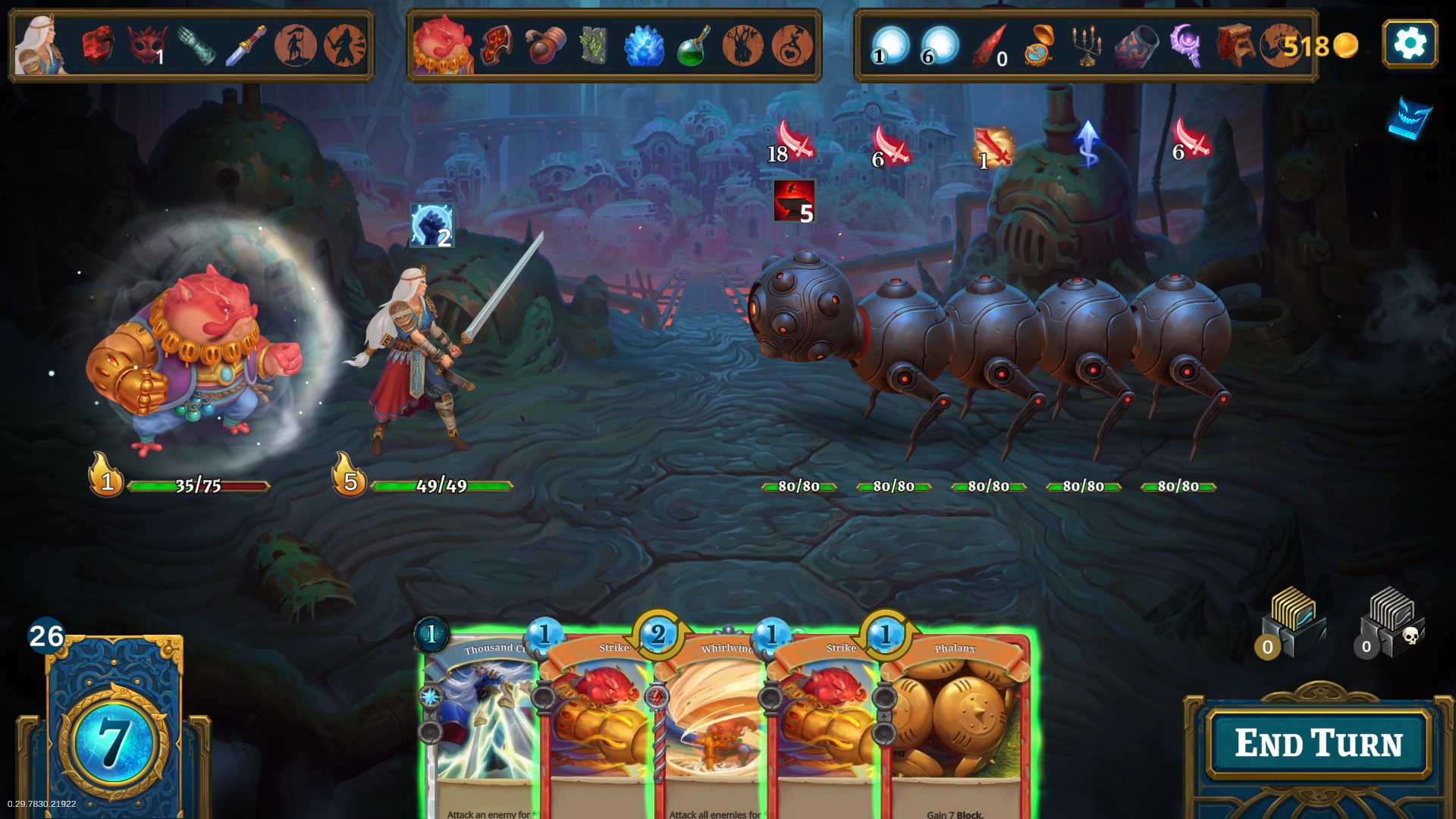
Each card has a cost, and at the start of each round you’ve got a limited amount of “mana” to spend on your cards. At the start of the game that’s just three, but some cards and artifacts give you more mana, and by the end of the game you can quite easily be starting rounds with eight mana. It’s rare for cards to cost more than 3 and the ones that do tend to have some mechanic that lowers their cost over the course of a battle.
In order to enhance cards you can apply gems to them. Gems come in a lot of different variants with different effects, some do simple things like adding +3 damage to a card, or letting you draw another card when playing the card the gem is attached to, other gems are more interesting, like one that puts a card with the gem on it on the top of the draw pile rather than discard pile when you play the card, allowing you to draw the card again at the beginning of the next turn. There are some mean combinations that can be made with these gems.
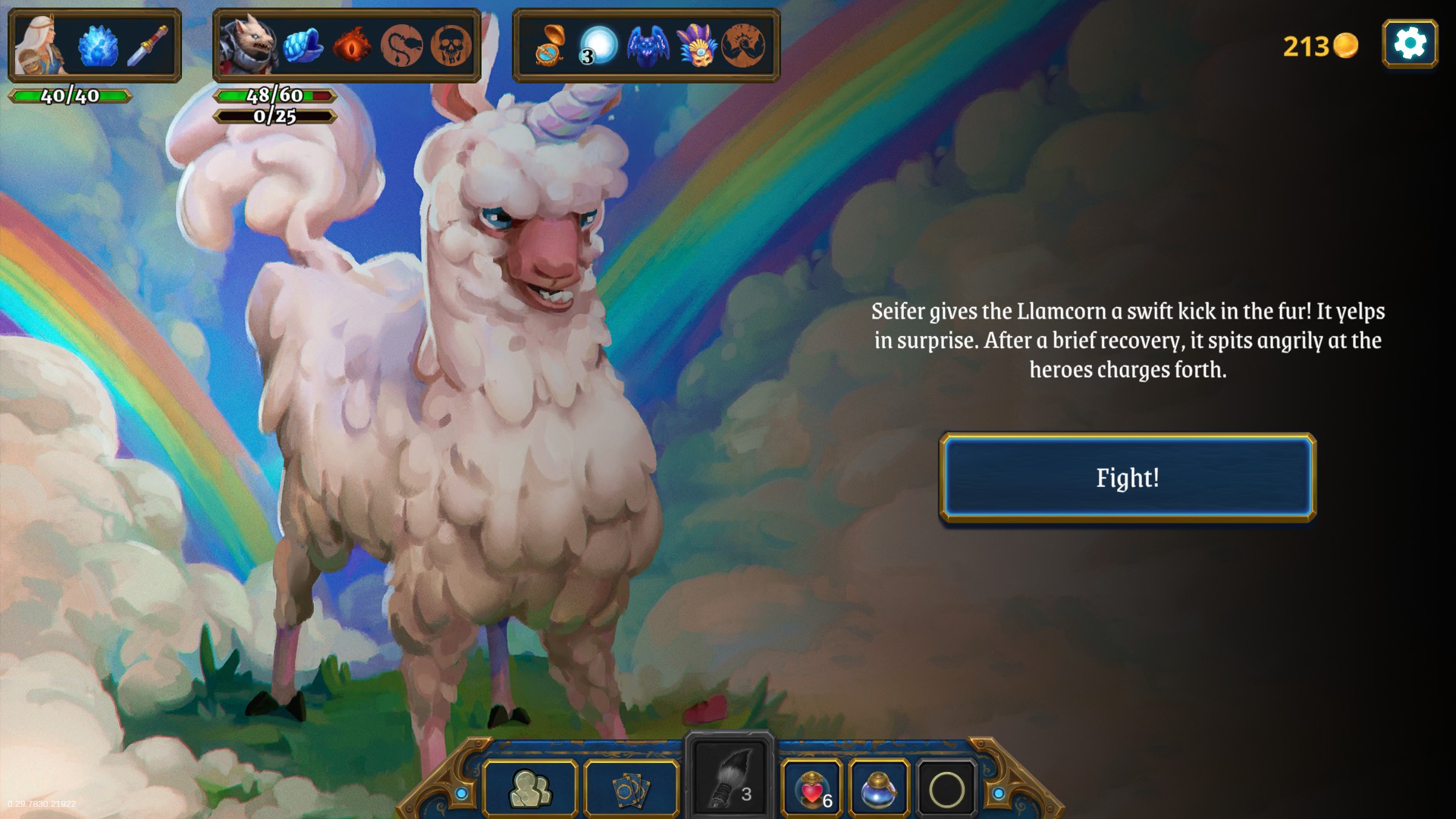
Artifacts are scattered around the map, can be bought as well as found on elite enemies and when you beat the boss of a level , and these give a permanent boost. Some help a single character while some strengthen the entire party. You don’t get nearly as many artifacts as you get cards, but some of them can have a big impact on how you play. Finding an artifact early on that makes you deal bonus damage when you’ve played a lot of cards in a round will encourage a vastly different playstyle to one that rewards you for playing powerful cards. Your party also levels up during a run, based on the number of cards in your deck, and at every level you can chose between three abilities, one for each character and a party ability. These are not the same every time you start a run, even if you’re using the same characters.
Enemies are varied and different strategies are needed for different enemies. Some enemies like to hide behind thick armour, others will spawn minions and some will deal high damage, but not every single turn. The enemies in the early game are usually pretty straight forward, they’ll attack, defend and apply minor debuffs, but bosses and enemies in the later parts of the game have more complex mechanics. Building an over-specialized deck can put you in trouble against certain enemies, so while specializing is good, you need to be careful with taking it too far.
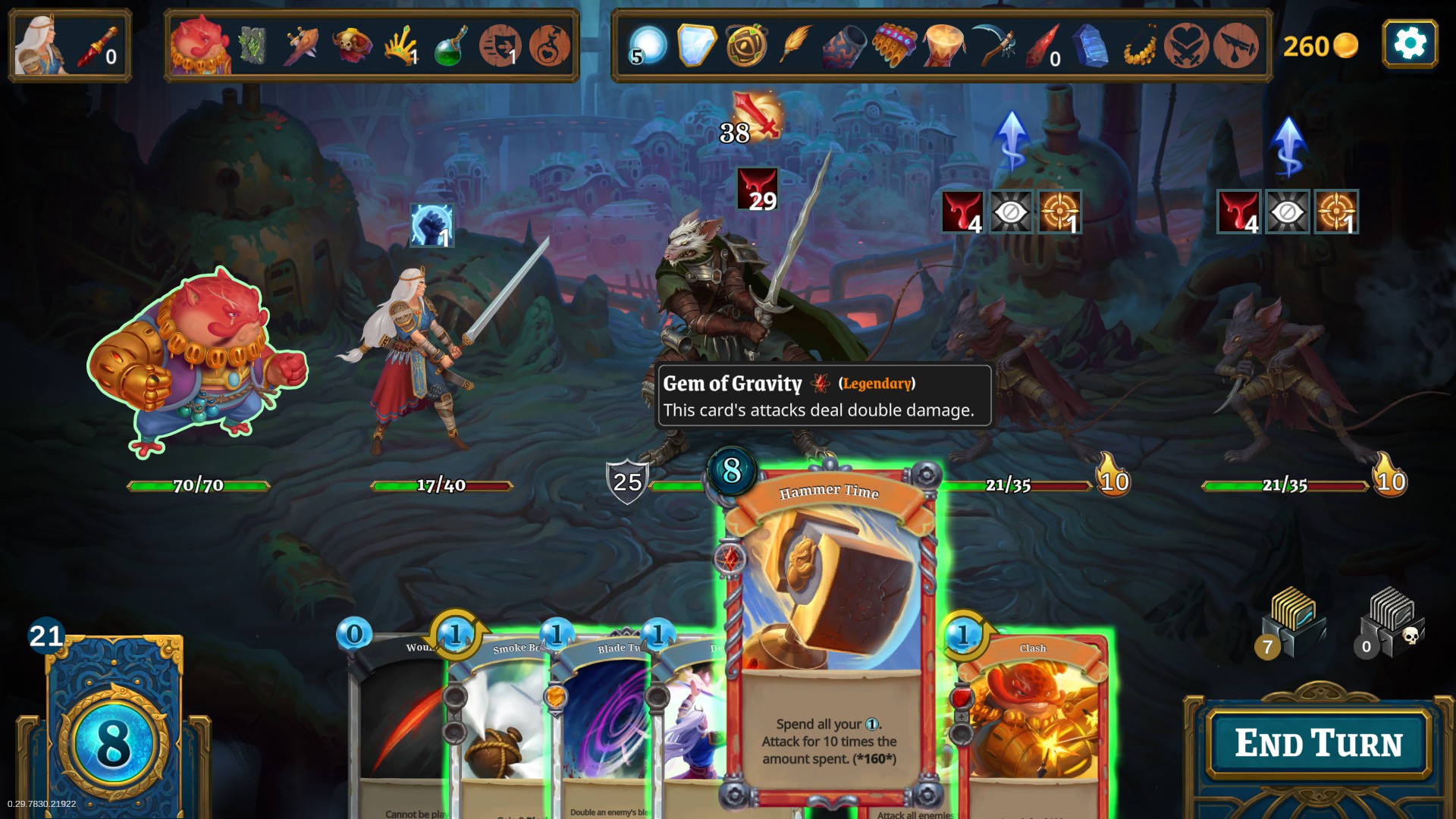
Each run of Roguebook is made up of three levels, with their own look and feel, as well as their own enemies. At the end of each level your characters will return to full HP and any negative cards you’ve got as a result of a character getting knocked down are removed, making mistakes less punishing than in some deckbuilding roguelites. Once you’ve beaten all three levels you’ve beaten the game. Levels are randomly generated and you’ll also not always face the same boss at the end of any given level. Once a run is over and you’ve eater killed the final boss, or got killed somewhere along the way you’ll be able to apply some permanent upgrades to your party. Think Rogue Legacy in how this system works, though most upgrades don’t directly improve your characters but instead give you a greater chance of finding better loot or more gold. Each character also earns experience and levels up between runs, though this does not improve your characters, it just unlocks more cards that you can find in the game, allowing for more complicated cards to be unlocked once you’ve got a grasp on how the mechanics of the game actually works.
After you’ve beaten the game once you’ll be given a chance to increase the difficulty, and work towards the true ending. This is done by applying modifiers, many of which both have an up and a downside. For an example you might be finding more fairies, who are basically gold piñatas (hit them and gold comes out), but prices on everything goes up significantly. These modifiers come in three different categories and once you’ve beaten one the next one will be unlocked. Some of these modifiers, like one that makes the enemies furthest to the back untargetable until every other enemy is killed, can make the game surprisingly challenging in certain situations. Apply enough modifiers and other parts of the game will also get harder, like enemies getting stronger and you’ll be getting less gold.
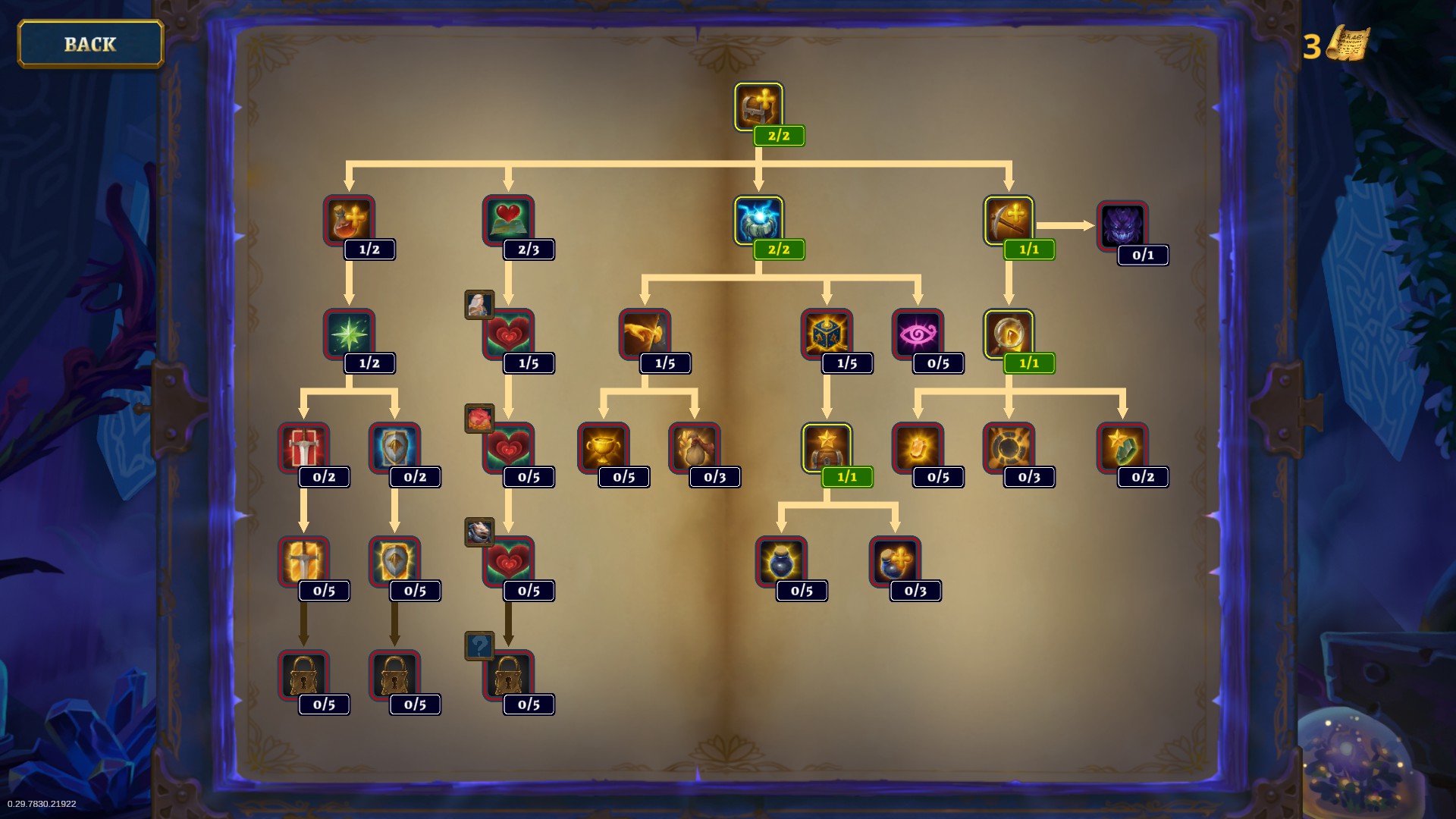
Closing Thoughts
I’m a big fan of deckbuilding roguelites, just check my past reviews and you’ll see that I’ve reviewed a bunch of these. Roguebook might actually be the best one I’ve reviewed thus far though. It immediately sank its teeth in me when I started playing and suddenly the day was gone. This is a really addictive and fun game, and it feels well balanced. Well, apart from a few almost broken card/artifact/gem combos that I was able to find, but those felt rewarding to find, and not like poor game design.
Fans of deckbuilding roguelites (this is really becoming a genre of its own, isn’t it?) should absolutely check this one out, it is great. This is probably one of the better games of its type to start with for any newcomers as it’s not too punishing early on and give you time to learn the basics before it starts to throw the more complex enemies and cards your way, but thanks to the modifiers that can be applied there’s enough here to challenge even veterans of the genre. I’m not sure if this one will have the longevity of its greatest rival, Slay the Spire, though and it could use a few more enemy types. But even so, consider this game highly recommended, for veterans and newcomers alike.

